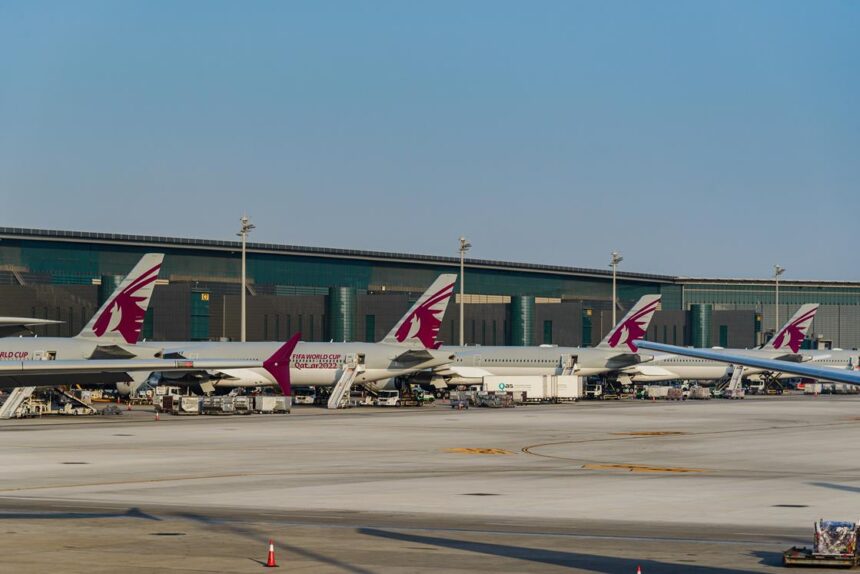The escalating conflict in the Middle East has thrown global aviation into disarray, with major carriers scrambling to adjust flight paths and schedules amid growing safety concerns. What began as isolated disruptions has evolved into a widespread operational challenge affecting passengers worldwide and threatening to destabilize an industry still recovering from pandemic-related setbacks.
“We’re navigating through unprecedented levels of regional complexity,” said Robert Chen, aviation security analyst at AirSafe Institute. “Airlines are making hour-by-hour decisions as they balance passenger safety against the commercial pressures of maintaining global connectivity.”
The impact has been particularly severe for carriers with significant Middle Eastern operations. Emirates, Qatar Airways, and Etihad Airways have collectively canceled over 70 flights in the past week alone, while European carriers including Lufthansa, Air France-KLM, and British Airways have suspended services to Tel Aviv, Beirut, and several Iranian destinations until further notice.
Flight tracking data reveals the extent of the disruption. Aircraft that typically traverse Middle Eastern airspace are now taking lengthy detours over Turkey, Egypt, and the eastern Mediterranean, adding between 40 minutes to two hours to journey times on key East-West routes. These deviations aren’t merely inconvenient—they carry substantial financial implications.
Industry estimates suggest the rerouting costs airlines approximately $12,000-$18,000 in additional fuel per long-haul flight. For an industry operating on razor-thin margins, these expenses quickly compound into millions of dollars weekly across the global network.
“The financial impact extends beyond immediate operational costs,” explained Sabrina Goldstein, chief economist at Canadian Transport Analytics. “We’re seeing ripple effects through entire route networks as delayed aircraft miss connection windows, creating a domino effect of disruption that can take days to normalize.”
For passengers, the consequences range from minor schedule adjustments to significant journey alterations. Toronto resident Michael Abadi described his experience: “My direct flight to Dubai was rerouted through Athens with barely 24 hours’ notice. What should have been a 13-hour journey turned into a 19-hour ordeal.”
Canadian carriers have felt the impact acutely. Air Canada has temporarily suspended service to Tel Aviv while implementing contingency plans for its Dubai routes. WestJet, which had been exploring expansion into the Middle East market, has reportedly put those plans on indefinite hold according to sources familiar with the airline’s strategy.
Aviation authorities, including Transport Canada and the International Civil Aviation Organization (ICAO), have issued a series of increasingly restrictive advisories, recommending carriers avoid specific air corridors even beyond active conflict zones. These precautionary measures follow painful lessons learned from past incidents, including the 2014 downing of Malaysia Airlines Flight 17 over eastern Ukraine.
The timing couldn’t be worse for an industry that had only recently regained momentum after the COVID-19 pandemic. The International Air Transport Association (IATA) had projected 2023 as the first truly profitable year for global aviation since 2019, with anticipated net profits of $25.7 billion. Those forecasts now appear increasingly tenuous.
Insurance premiums for flights operating anywhere near affected regions have surged by 15-30%, according to industry data, adding another layer of financial pressure. Some smaller carriers without robust alternative routing options have reportedly suspended operations entirely on certain intercontinental routes.
The disruption extends beyond passenger operations. Air freight, a critical component of global supply chains, faces significant challenges as cargo flights divert from established routes. Time-sensitive shipments of pharmaceuticals, electronics, and perishable goods are experiencing delays that could potentially impact availability in Canadian markets.
As airlines navigate this complex operational environment, the question remains: how long can the industry sustain these adjustments before more permanent route restructuring becomes necessary? With regional tensions showing no signs of abating, carriers and passengers alike may need to prepare for a new normal in global aviation connectivity.










